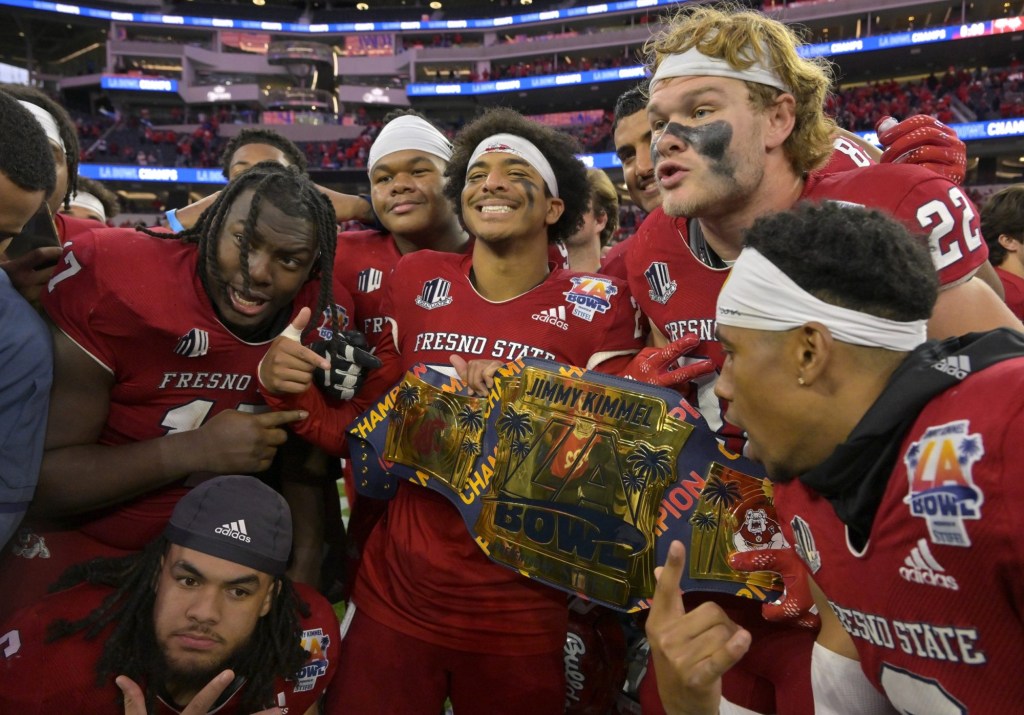In 1984, the Supreme Court broke up the NCAA’s monopoly on football television deals, paving the way for millions of dollars to flow into conference-specific broadcast contracts. While it was heralded as a win for the free market, Justice Byron White raised concerns that the very fabric of the NCAA could be “threatened by unbridled competition in the economic sphere.”
Almost four decades later, his fears have become a reality.
The Power 5 cannibalized itself in 2023 as the richest conferences ripped the Pac-12 apart, fueled by an unrelenting pursuit of TV revenue disguised as an interest in stability and athlete welfare.
The 108-year-old conference, which disintegrated in early August, played its last football championship in December.
Earlier this month, Oregon State and Washington State were granted control of the conference’s board—and its future. Between their agreements with conferences for next season and their recent settlement, they’re in control of their destiny.
But the Pac-12 as we know it, even if it continues to exist, will never be the same.
A Year of Empty Promises
The first domino fell in the summer of 2022, when USC and UCLA announced they would move to the Big Ten in 2024. The Pac-12, led by George Kliavkoff, then dove into negotiations for a new rights deal that would be lucrative enough to keep the rest of the conference intact.
At the time, Kliavkoff felt he was in an “enviable” position because the Pac-12 was supposed to be next in line for TV rights. But the Big 12 swooped in and inked an extension with Fox and ESPN earlier than expected, leaving the Pac-12 as the only Power conference without a media deal past 2024. The economy crumbled shortly afterward.
Making matters worse, college football’s new super-conferences, the SEC and Big Ten, gobbled up more of ESPN’s and Fox’s valuable television inventory and dollars. CBS and Warner Bros. Discovery reportedly left the negotiating table with the Pac-12 completely by mid-February.
Throughout this spring and early summer, Pac-12 school administrators made comments to various media outlets hinting that a broadcast rights deal could be near. In mid-July, the Pac-12 schools put out a statement saying they had had “positive” discussions and were looking forward to “consummating” a deal soon. In July, it was rumored that Kliavkoff would present a deal on Pac-12 Football Media Day—but that didn’t happen.
There had been a deal. It was just never signed.
A Failed Negotiation
By the end of July, Colorado had grown tired of waiting: The Buffaloes announced they would depart the conference in 2024 to rejoin the Big 12. Colorado’s once and future home put it succinctly: “They’re back.”
At the time, a source told Front Office Sports that the Pac-12 was “in never-never land.”
It all came down to one final meeting on Aug. 5, when Pac-12 schools were supposed to consummate a deal with Apple for little more than $20 million in guaranteed annual revenue per school. All other revenues would depend on the schools’ ability to sell Apple TV+ subscriptions. The deal was much smaller than those for even the lower end of the Power conferences, which paid member teams in the low-to-mid $30 million range.
The two sides failed to agree, and the Pac-12 started imploding that evening:
- Oregon and Washington announced their intentions to move to the Big Ten; Fox had agreed to bankroll the move, paying between $30 million and $40 million of its media deal to the schools, FOS reported.
- Two hours later, Arizona, Arizona State, and Utah announced they were leaving for the Big 12.
- On Sept. 1, Stanford and Cal announced they would join the ACC.
By 2024, Oregon State and Washington State will be the only schools left.
Fighting for Survival
After the Pac-12’s collapse, OSU and WSU went to court to determine their next steps.
In September, the schools sued the Pac-12 over control of the conference’s board. They wanted to keep the millions in conference assets and intellectual property, as well as to stop the 10 departing members from dissolving the conference and taking the spoils for themselves.
The schools had conversations with the Mountain West, which was contemplating a reverse-merger, FOS reported, though that hasn’t come to fruition. The two schools have since announced a football scheduling partnership with the Mountain West for the 2024-25 season. To participate, they’ll pay the Group of 5 conference a total of $14 million.
After three months of litigation, OSU and WSU finally won control of the Pac-12 in mid-December. The decision forced the 10 departing schools to settle, though many specific details have not been ironed out, the departing schools said in a statement.
But regardless, the FBS football landscape will never be the same. The Power conferences have officially begun their consolidation—a phenomenon long predicted by experts—in the pursuit of media rights dollars now only awarded to the top matchups.
Power 5 administrators spent the entire year wringing their hands about the ever-changing nature of college sports, but their own decisions caused the implosion of their structure.







